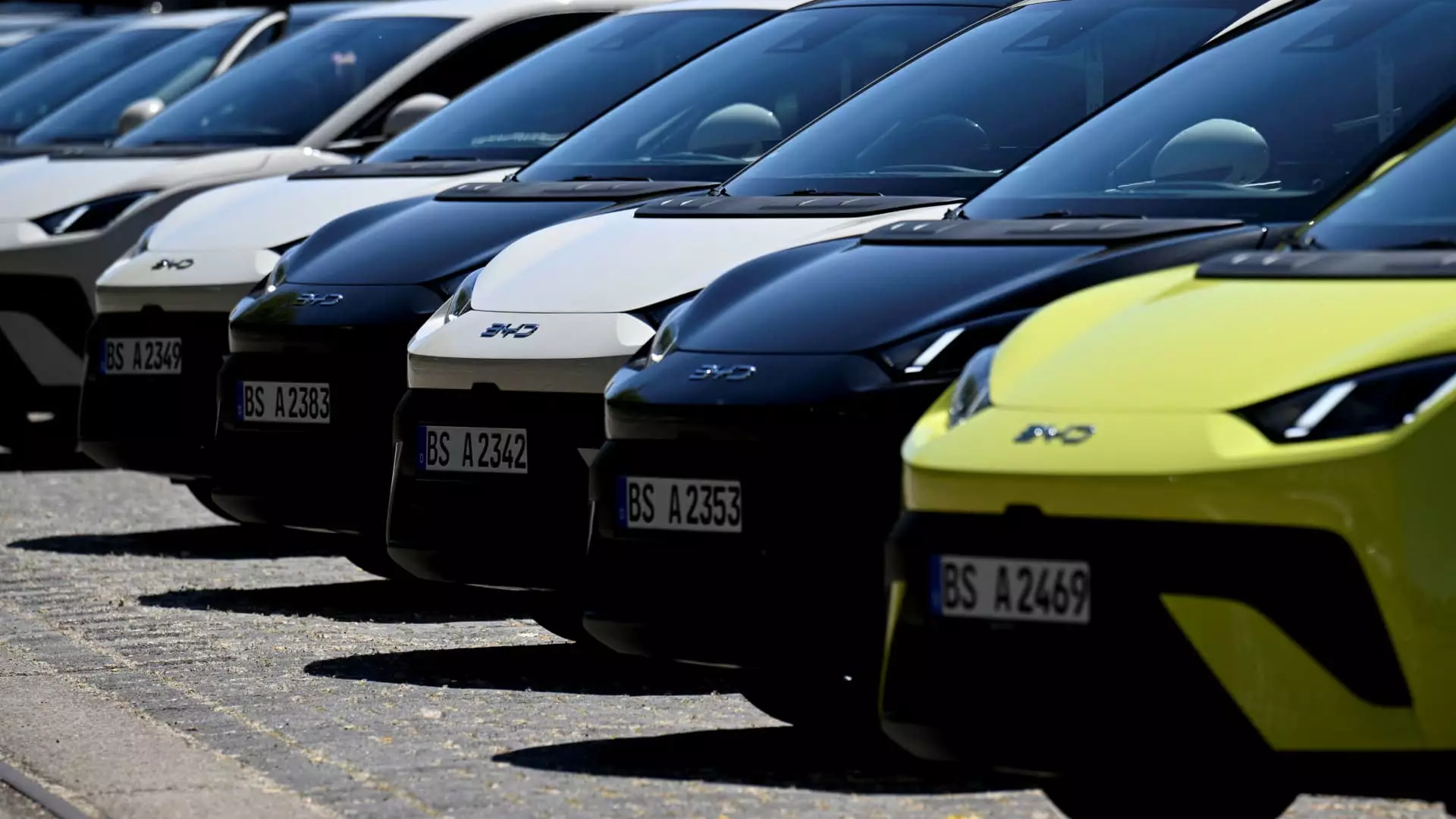China’s electric vehicle (EV) market, once heralded as a bastion of growth and innovation, is now mired in a fierce price war that reveals the precariousness of its participants. For the month of May, Tesla’s sales plummeted by a disconcerting 15% year-over-year, creating ripples of concern throughout the automotive industry. This decline starkly contrasts with BYD’s performance, which exhibited a 14% increase in sales, retaining its title as the market leader. However, even BYD is now engaging in aggressive discounting, a clear indication that buoyant sales are more fragile than they appear. The implications of such discounts loiter like a dark cloud over the sector, signaling a future where profit margins may dwindle beneath the weight of consumer choices driven by price sensitivity.
The Analysts’ Forecast: A Market on Edge
Industry analysts have observed that the ongoing price competition is unlikely to dissipate in the immediate future. A team led by CLSA analyst Xiao Feng predicts that BYD is lagging behind its sales targets, compelling the brand to announce steep discounts to woo buyers back into showrooms. Despite maintaining a favorable view on BYD shares, the analysts’ve identified Geely as the “best positioned” firm in this increasingly treacherous landscape. Geely, with its multi-brand strategy, is not just surviving; it is leveraging its strengths effectively to carve out competitive advantages. The company’s Galaxy NEV brand is touted for outperforming BYD’s offerings, underscoring the intricate dance of rivalry that’s redefining market dynamics.
Geely vs. BYD: The New Contestants on the EV Stage
Geely’s ascent does not merely reflect savvy business acumen; it speaks to a larger narrative of innovation versus price strategy. While BYD’s volume-based sales model prevails, Geely is demonstrating that by focusing on technological enhancements and competitive pricing, it can attract a dedicated consumer base. Analysts have begun diverting attention from BYD to Geely and other niche manufacturers like Xpeng, which stands poised to capture additional market share through its advanced driver-assist features and readiness for new model launches. The market’s shifting focus away from the established giants to agile newcomers is emblematic of a broader trend in which adaptability and technology may eclipse relentless discounting as the keys to sustained market success.
Xpeng’s Daring Promises and Leapmotor’s Stability
In this frenzied battle for market supremacy, Xpeng’s recent achievements are particularly striking. With a remarkable string of over 30,000 cars delivered consecutively for seven months, Xpeng’s promise seems rooted in technological sophistication, capturing the essence of what modern consumers demand. A variety of new models launched under Xpeng’s lower-priced Mona brand may further solidify its position in the market. Conversely, Leapmotor and Li Auto exhibit relative stability, maintaining their ground in sales while navigating the turbulent environment with distinct strategies. Li Auto’s SUV models, with their unique hybrid features, diverge from the downhill price-slashing battle, instead opting for a more positioned niche strategy. This battle for survival is as much about brand identity as it is about sales volume.
Global Ambitions and Local Risks
While brands like BYD trumpet their international aspirations, analysts caution against overconfidence. JP Morgan’s Nick Lai has highlighted potential pitfalls, such as the risk of an influx of low-priced cars into competitive European markets leading to tariff increases. Regulatory scrutiny is ramping up, prompting concern about excessive competition. The Chinese EV market, with an overcapacity dilemma looming—50 million units produced versus annual sales hovering around 27 million—suggests an unsustainable trajectory if consumption doesn’t catch up. This convoluted situation not only raises alarms for local producers but also sheds light on whether regulatory frameworks can adapt quickly enough to avert further collapse.
A Shift in the Future of Electric Vehicles
What remains evident in this ongoing saga is that the supercharged atmosphere of price competition is far from beneficial. For both companies trying to expand and investors seeking stability, the mind-boggling dynamics are leading to a climate of uncertainty. With consumer preferences swinging towards value for money, companies may find themselves in a catastrophic race to the bottom, risking the very innovations that once fueled their growth. This chaos forces us to wonder: will the tumultuous trends in the Chinese EV market serve as a bellwether for the global electricity vehicle landscape, or will they differentiate into safe niches where better strategies reign supreme? As the numbers dwindle for some and surge for others, one thing stands clear: the epoch of easy growth in China’s electric vehicle market is over, replaced by a complex maze of competition, strategy, and risk.

